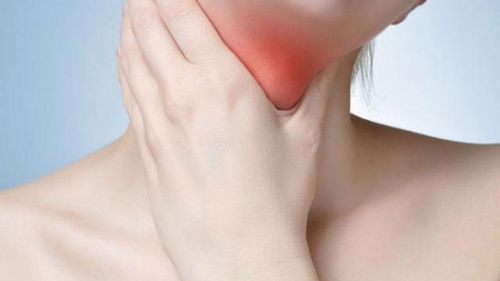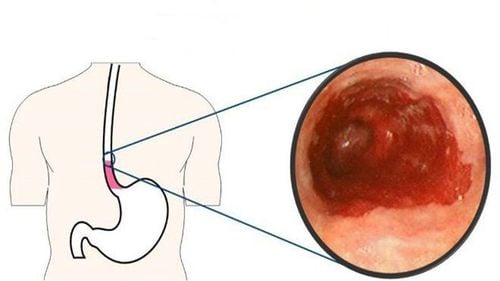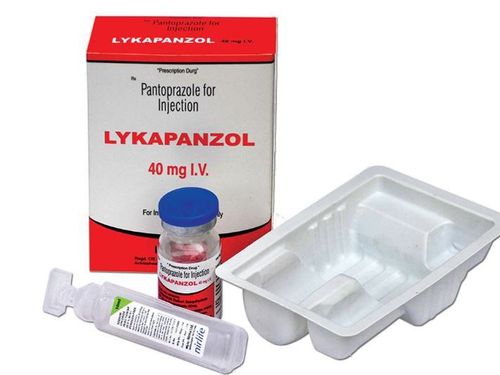This is an automatically translated article.
Hernia through the esophageal hiatus is a common disease in the elderly. If not detected and treated promptly, the disease can lead to dangerous complications.
1. Overview of hernia through the esophageal hiatus
1.1 What is a transesophageal hernia?
Hernia through the esophageal slit is a condition where the esophageal septum is weakened (acquired disease, seen in the elderly) or the diaphragm in the esophageal slit has a defect hole (congenital disease, very few young people). acquired age).
1.2 Classification of diseases
Esophageal hiatus hernia is usually divided into 2 types
1.2.1 Sliding hernia
The majority of patients with sliding esophageal hiatus hernia have no symptoms. The common consequence of hernia through the esophageal slit is reflux esophagitis, some studies have shown that 20% of patients with sliding hernia have signs of esophagitis due to reflux.
In addition, patients with sliding esophageal hiatus hernia can also experience many dangerous complications such as esophageal erosions, esophageal ulcers, bleeding,...
1.2.2 Rolling hernia
Then the cardia of the stomach is still in the normal position in the abdominal cavity. The greatest risk of a transesophageal hiatus hernia is strangulation, leading to necrosis of the part of the stomach that is herniated.
1.3 Factors causing hernia through the esophageal hiatus
Muscles (including the diaphragm, especially the 2 diaphragmatic pillars) are weak and elastic (transesophageal hernia acquired in the elderly) Esophageal gap defect (congenital hernia through the esophageal cleft) birth in young people) Increased pressure in the abdominal cavity (women, obese people, people with chronic constipation) Chronic esophagitis (fibrosis of the longitudinal muscles, resulting in a shortened esophagus).

Người béo phì tăng áp lực trong xoang bụng gây thoát vị qua khe thực quản
1.4 Who is susceptible to hernia through the esophageal slit?
Hernia through the esophageal hiatus is common in people over 40 years of age and is mainly female. The older a person is, the more likely they are to get the disease.
In fact, only 10% of patients under the age of 40 have a transesophageal hernia while 70% of patients are over 70 years old.
2. Diagnosis of hernia through the esophageal slit
2.1 Clinical diagnosis
Patients with hernia through the esophageal hiatus may have one of the following three clinical manifestations:
No signs or symptoms (accounting for the majority of hernias through the esophageal hiatus) Symptomatic (esophagitis) reflux esophagitis, symptoms of esophageal hernia) Complications (complications of transesophageal hernia can be gastric volvulus, gastric curvature necrosis) When diagnosing transesophageal hernia Management, doctors usually rely on the following symptoms:
Epigastric pain, pain just behind the sternum Burning behind the sternum Fullness, indigestion Vomiting, vomiting blood Chest pain, difficulty breathing.

Bệnh nhân nôn ói là dấu hiệu của bệnh thoát vị qua khe thực quản
2.2 Subclinical diagnosis
X-ray straight chest X-ray oesophagus CT, MRI Ultrasound Endoscopic esophagus- stomach.
3. Treatment of hernia through the esophageal slit
3.1 Medical treatment
Medical treatment of hernia through the esophageal slit is mainly against esophageal reflux.
Anti-reflux treatment includes 3 main options: Forming new healthy living habits, reducing acid secretion in the stomach and enhancing oesophageal-gastric drainage.
Some lifestyles of patients with hernia through the esophageal slit should be changed as follows:
Lose weight (if obese) Avoid eating substances that reduce lower esophageal sphincter tone such as alcohol, coffee, chocolate, lemon juice, tomato, .. Do not eat much in a meal do not lie within 3 hours after eating When lying on the knee 20cm higher than the body is also a way to control hernia through the esophageal slit.

Người bệnh thoát vị qua khe thực quản cần tránh uống cà phê để ngăn ngừa tình trạng trào ngược thực quản.
3.2 Surgical treatment
Treatment of hernia through the esophageal hiatus es hernia through the esophageal slit includes:
Bringing the herniated stomach back into the abdominal cavity Sewing to close the hernia hole, if the hernia hole is large, a graft can be placed to cover the hernia hole Anti-reflux surgery if the patient has Sliding esophageal hiatus hernia Fix the stomach to the abdominal wall by temporarily opening the stomach if the patient has a hernia through the esophageal cleft. Any questions that need to be answered by a specialist doctor as well as if you want to be examined and treated at Vinmec International General Hospital, you can contact Vinmec Health System nationwide or register online. online HERE.
SEE MORE
13 things to know about hiatal hernia esophagitis Reflux esophagitis - A dangerous but underrated disease What to do when you have a sore throat caused by gastroesophageal reflux?













